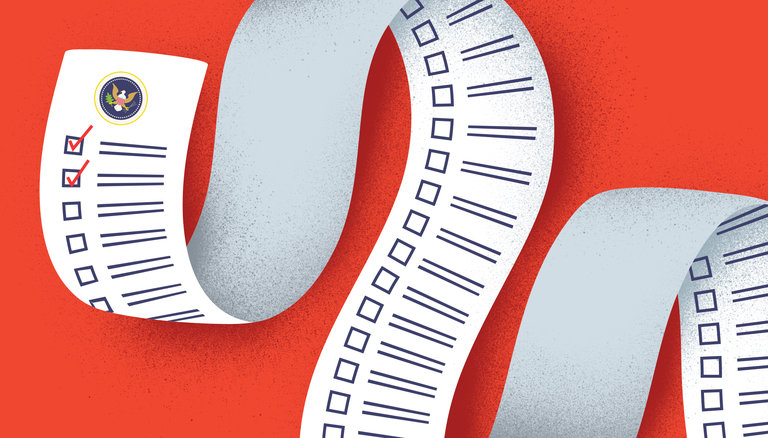
New York Times – Editorial: Donald Trump and a Sea of Empty Desks
 “Our job is to be ready on Day 1,” Vice President Mike Pence said in Washington last week. “The American people can be confident that we will be.”
“Our job is to be ready on Day 1,” Vice President Mike Pence said in Washington last week. “The American people can be confident that we will be.”
The American people have little cause for such confidence. Given that President Trump thinks, as he said in his inaugural speech, that the country is in desperate straits, it’s peculiar that he didn’t assemble a crack team in record time. Instead, he assumed office on Friday with the most incomplete team in recent history. Since then he’s seemed to focus more on his inaugural crowd size than on the immense job at hand.
An incoming president is expected to fill about 4,000 positions. Nominees for more than 1,100 of them must be confirmed by the Senate. It is impossible for any president to fill all these positions by Day 1. But transition veterans recommend that a new president have a White House team assembled — 450 people who don’t require Senate confirmation — and have nominees for the top 100 positions that must be Senate-confirmed.
Mr. Trump is not even in the ballpark. There are no nominees for three-quarters of the top 100 jobs. His White House staff, some 30 of whom were sworn in on Sunday, is light on governing experience. Yet many of those, like the former “Apprentice” and “Celebrity Apprentice” contestant Omarosa Manigault, the assistant to the president and director of communications for the Office of Public Liaison, carry the titles that rank highest.
Mr. Trump completed his cabinet roster of 21 people only on Thursday, and there’s still a long road ahead for most. He named them without vetting them first, and an unusual number are wealthy individuals whose extensive holdings have taken the Office of Government Ethics longer to screen for potential conflicts of interest. Such conflicts or sheer unfitness may yet doom some of them. Mr. Trump’s transition team said last week that it expected the Senate to confirm seven cabinet nominees on Friday, which would be the same number as George W. Bush and Barack Obama had on Inauguration Day. The Senate cleared only two: Gen. John Kelly for homeland security secretary and Gen. James Mattis as defense secretary.
Sean Spicer, Donald Trump’s new press secretary, says there’s “a lot of work going on beneath the surface to have a lot of these positions ready to go as soon as possible” in the coming days. Meanwhile, Mr. Trump’s team has had to ask some 50 essential officials to stay on, most of them national security and diplomatic professionals.
So much for the old canard about a businessman knowing how to run government more efficiently than people with, you know, experience in government. Clearly, Mr. Trump could have spent more time on the transition and less on Twitter. But why, in a federal government of more than two million employees, many with deep experience, must the president appoint 4,000 people, and the Senate weigh in on 1,100? Moving a dozen cabinet nominees through the pipeline has thrown the Senate into near-chaos. Now, multiply that by 100. “This huge number of presidential appointees are a vestige of the spoils system, no way to run a railroad and certainly no way to run our government,” says Max Stier, head of the Partnership for Public Service, which advocates for government employee effectiveness, and assists transition teams of both parties.
One way to lighten the load is to reduce the number of jobs requiring Senate confirmation. The Senate should weigh in on the president’s defense nominee, obviously, but why should scores of lesser Pentagon jobs, like the nine part-time members of the Board of Regents for the Uniformed Services University of the Health Sciences, endure that laborious process? The Partnership for Public Service identified nearly 700 of the most important Senate-confirmed jobs; confirmation could be dispensed with for the rest, which are board positions and the like.
In 2012, the Presidential Appointment Efficiency and Streamlining Act created a list of 169 jobs that are appointed by the president but would no longer need Senate confirmation. Mr. Trump could push Congress to add more to this list. But he needs to pull his own act together first and get his administration in place and up to speed.
